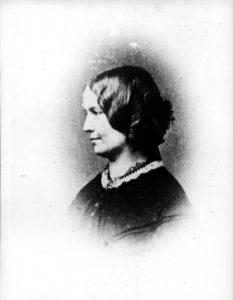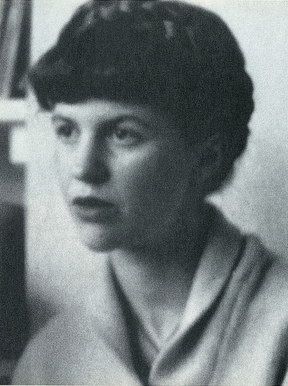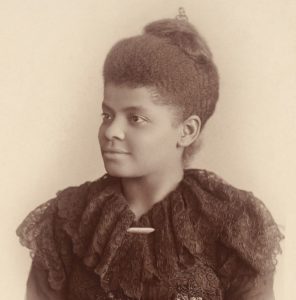When Amy Padnani moved from The New York Times’ news desk to its obits department last year, she was charged with the task of “exploring different ways of storytelling with obituaries.”
The seven-year NYT veteran, whose new title was digital editor of obituaries, was up for the challenge. One of her first projects was developing a compelling multimedia obit for Ronald Markman, an outsider artist who, in Padnani’s words, “conjured an alternate universe to represent the absurdity he saw in everyday life.” In it, she featured multiple pieces of Markman’s work, superimposing captions that not only contextualized his art, but also his life.
"It’s a forum for people to talk to us about what it is they want to see, and I think that only helps us, to see those viewpoints and perceptions they want included."
From there, the 34-year old Padnani has only gotten more ambitious, working on “advance” obits that involve, for example, producing 360° videos of the studios of designers who are still living. But it’s her most recent project, “Overlooked,” that has garnered the most attention.
Launched earlier this month, “Overlooked” featured 15 obits, in print and online, of women and people of color who didn’t get a Times obit when they died – and should have. Writing about the series in the Sunday column “Inside The Times,” Padnani explained that in the wake of Black Lives Matter and #MeToo, she, a woman of color, wondered how she could “advance the conversation” about injustice, discrimination and inequality in a meaningful way. An answer came to her while researching a woman in the tennis world; that answer snowballed into the idea for an entire series that would touch multiple segments of The Times, from Padnani’s own obits department to the paper’s visual and multimedia departments.
I met with her at The Times building in Manhattan to talk about the series. The interview has been slightly edited for clarity and flow.

Most people think about obituaries as a fairly static section of the paper and a static form. Can you talk about how you envisioned your role so dynamically – as something more than just reporting on people who have died, as something amenable to multimedia? The “Overlooked” series has so many moving parts and it seems like a lot of people have touched this to make it something really rich and with the potential to reach many readers who don’t necessarily ever look at the obits.
That’s true. As digital editor, that was my mandate: to explore different ways of storytelling with obits. Thinking outside of the box is kind of my mandate. And then there’s audience engagement: building up our social media presence and promotion. We have all kinds of newsletters, so we reach out to those people to ask them to promote an obit when it’s relevant, so, for example, the Race/Related team.
But in addition to experimenting with all this stuff, I’m part of the fabric of The New York Times, and I can try to think of ways to make a difference in what we’re doing. So, for example, I started reaching out to our foreign correspondents and saying, “Hey, can you let us know if somebody in your region dies?” because they are our eyes and ears in the most far-flung parts of the world and they would be able to let us know. This is one really simple way to include more women and more people of color. For a long time, The New York Times has been very U.S.-centric, and at times, even just New York-focused, so we’ve reached out a lot more internationally with various initiatives. It was a very natural step to take: Why not include more international people in our obituary pages?
I woke up on Friday [the day the “Overlooked” series launched] and “Overlooked” was the first thing I read. I thought, “This is really amazing” – everything about it was so well-conceived. And then I went online to gauge the chatter around it, and I saw a tweet from Ellen Pao saying something like: “OK, fine, NYT, that’s great! Profile these dead women, but why aren’t you profiling more women in real life?” And I felt like the criticism wasn’t wholly fair. You’re responsible for your department, right? In your “Inside The Times” explaining the backstory of the series, you’re clear about this: You ask “What can I do to advance the conversation?” How do you respond to people like Ellen Pao, who are like, “too little, too late,” or “Can’t the Times do a better job of covering women and POC in real life?”
To get a Times obituary is something very exclusive, something very special, and we set the bar very high. We have limited resources as a newspaper, and so it is a prestigious thing. And, unfortunately, our obituaries pages are not a reflection of our current-day society; they are a rear-view look at a couple generations ago, and a couple generations ago, women and people of color were not easily invited to the table to make a difference. They really had to fight and break through barriers, so that means they weren’t getting acknowledged for what they were doing, even if they were making amazing contributions to society. People don’t find this answer very satisfying.
But I’m hopeful that, going forward, all this will change because there’s such a focus on these important issues right now. There’s also our brand-new gender editor and our Race/Related team, which are really tasked with going to every part of the newsroom and infusing everyone with a different perception, with changing our coverage to include more women and people of color and to eliminate the dominance of the white male voice of the NYT and media in general. They’re not relegated to one corner of the newsroom. They’re responsible for going around the entire newsroom and making a difference.
"Unfortunately, our obituaries pages are not a reflection of our current-day society; they are a rear-view look at a couple generations ago, and a couple generations ago, women and people of color were not easily invited to the table to make a difference. They really had to fight and break through barriers, so that means they weren’t getting acknowledged for what they were doing, even if they were making amazing contributions to society."
What are the kinds of responses that “Overlooked” has evoked?
Even with the negative responses, you can tell that “Overlooked” is a meaningful project and that people resonate with it. It’s clear that people felt like they needed this. As of today [Wednesday, March 14, 2018], there have been more than 2,200 submissions [of people to add to the “Overlooked” series], which is amazing. It’s a forum for people to talk to us about what it is they want to see, and I think that only helps us, to see those viewpoints and perceptions they want included.
Inside the building, I’ve heard from more than 200 colleagues who have written to say how much they appreciated the project, and that alone … I was blown away. A few people of color in the building also said it was personally meaningful for them to feel seen, as they put it. So it really did impact a lot of people in a lot of different ways that were all important, I think.
How are you measuring – and how are your bosses measuring – “performance” of pieces like this?
It’s tough because we don’t really have a benchmark against which we can measure performance. In obits, you never really know what’s going to resonate. For “Overlooked,” there have been 2 million readers overall. That’s pretty amazing. That’s almost Prince level.

Yesterday, I was listening to Brooke Borel’s “Methods” podcast, an episode with your colleague, Margalit Fox. Margalit was talking about her work as an “advance” obits writer, working on the obit of someone who’s still alive. How do your methods differ when you’re working on, as you were with “Overlooked,” the stories of people who died many years ago? In your “Inside The Times” column, you say that you took a more storytelling approach than a ‘traditional obituary style,’ but I’m wondering how the reporting of these very post-mortem obits unfolded?
The research was fascinating. I’ll give you the example of Mary Ewing Outerbridge. I wrote her obituary. She was credited on one website with introducing tennis to America. I researched, I talked with an historian at USTA, and there wasn’t really agreement: Some people said, “Oh yes, it’s definitely her,” and others said, “Oh, I wouldn’t say it was her at all,” so I had to write my research into the piece. I think people found that really fascinating. There were other examples, too, including the story of the first black woman to ride around the United States on a motorcycle. This story hasn’t run yet. We had to work with our research team. We ordered her death certificate. We had to corroborate a lot of contested details.
How many people are in the series, and when does it end?
We don’t have an end date. We started with 15 — we thought it was a powerful number and it gave us a cross-section of topics: athletes, cultural figures, scientists, etc., and a cross-section of international figures. But we have a couple dozen more people ready to go and a couple dozen more names to research. Lots of people around the building wanted to contribute to this in some way. There were more than 50 in-house writers who wanted an assignment. And since “Overlooked” went live, I’ve heard from at least 20 more people in the building who are interested in contributing. So I have a lot more work to do! It’s really just a matter of playing matchmaker. This series has so much potential to become a regular feature in our obits pages.
What has been most gratifying to you about the responses so far?
Honestly, the responses of the people of color I work with who have been so inspired by this. One woman, she had only started the company in the past year and she said, “As a woman of color, I’m amazed to see another woman of color at the company achieve such a collaborative project.” I wrote back to her and she said, “Thank you for your response.” I was like, “I’m not a celebrity!” [laughs incredulously] People are looking to this series as a model for something. I don’t really know. But it seems to have made people feel better about their place here at the company, and that means a lot to me.



